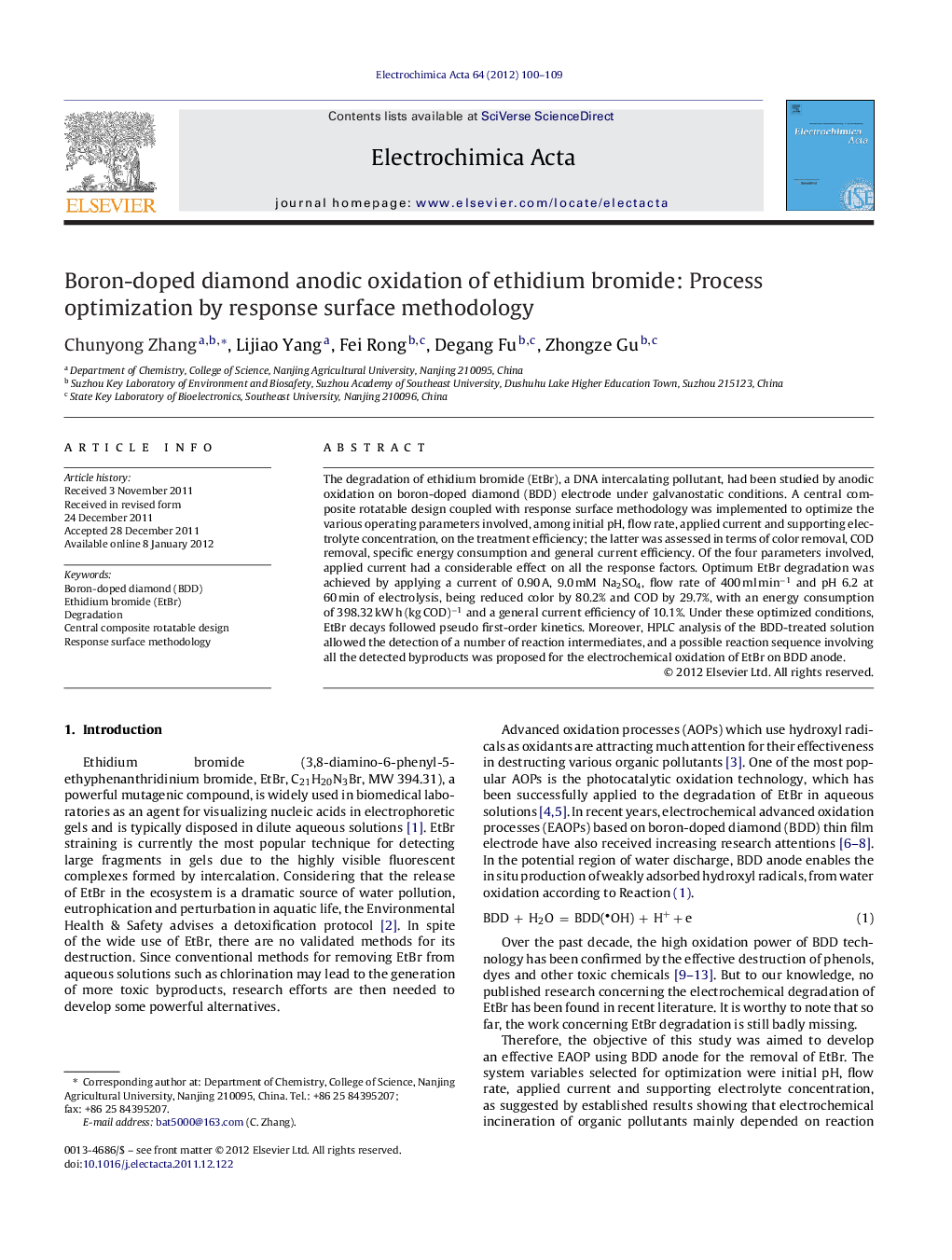| Article ID | Journal | Published Year | Pages | File Type |
|---|---|---|---|---|
| 189095 | Electrochimica Acta | 2012 | 10 Pages |
The degradation of ethidium bromide (EtBr), a DNA intercalating pollutant, had been studied by anodic oxidation on boron-doped diamond (BDD) electrode under galvanostatic conditions. A central composite rotatable design coupled with response surface methodology was implemented to optimize the various operating parameters involved, among initial pH, flow rate, applied current and supporting electrolyte concentration, on the treatment efficiency; the latter was assessed in terms of color removal, COD removal, specific energy consumption and general current efficiency. Of the four parameters involved, applied current had a considerable effect on all the response factors. Optimum EtBr degradation was achieved by applying a current of 0.90 A, 9.0 mM Na2SO4, flow rate of 400 ml min−1 and pH 6.2 at 60 min of electrolysis, being reduced color by 80.2% and COD by 29.7%, with an energy consumption of 398.32 kW h (kg COD)−1 and a general current efficiency of 10.1%. Under these optimized conditions, EtBr decays followed pseudo first-order kinetics. Moreover, HPLC analysis of the BDD-treated solution allowed the detection of a number of reaction intermediates, and a possible reaction sequence involving all the detected byproducts was proposed for the electrochemical oxidation of EtBr on BDD anode.
► Boron-doped diamond was used to degrade ethidium bromide. ► The process was optimized by a central composite rotatable design coupled with response surface methodology. ► Applied current is proved to be the most significant variable. ► A possible reaction sequence involving all the detected byproducts was proposed.
